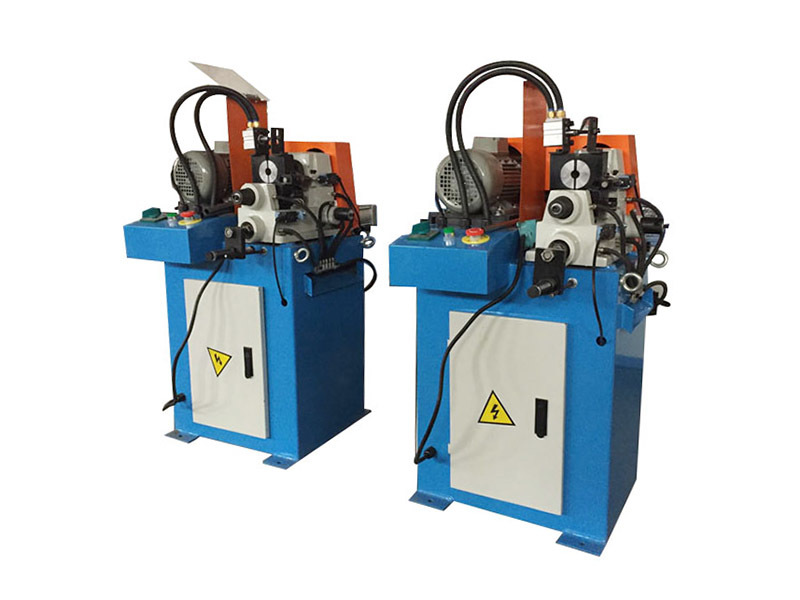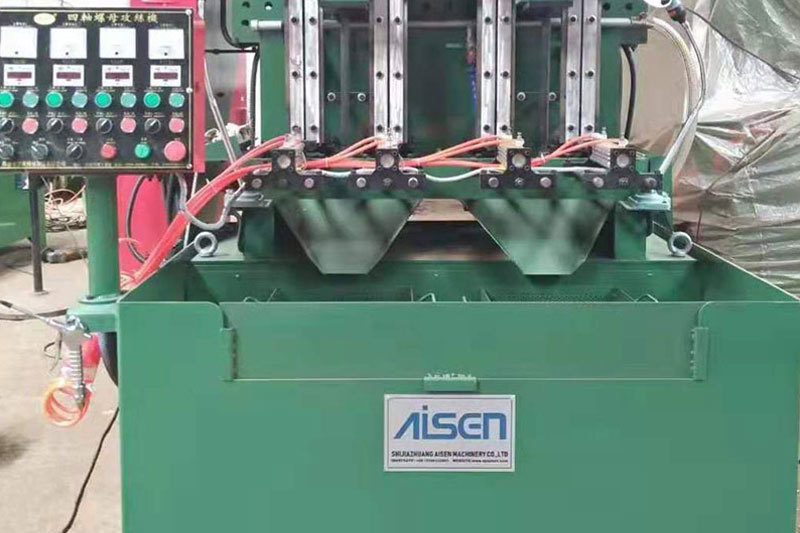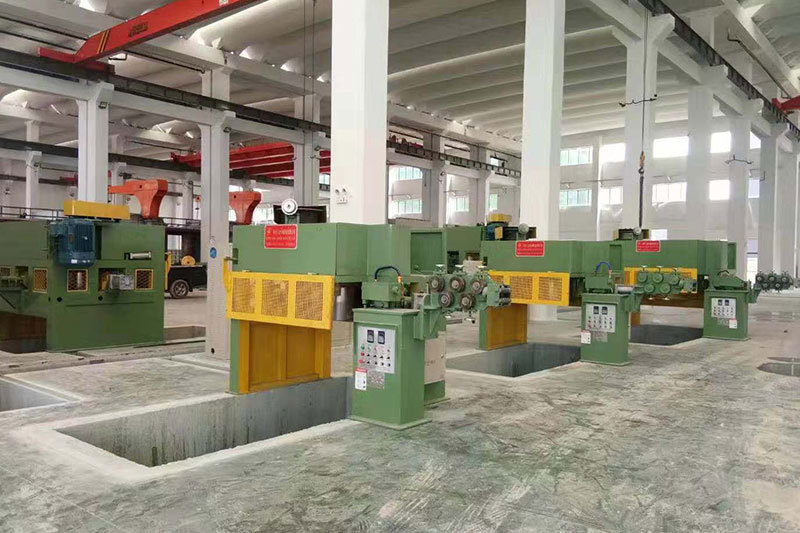Why Choose a Single Head Chamfering Machine for Precision Engineering?
Summary:
Why Choose a Single Head Chamfering Machine for Precision Engineering?
Introduction to Chamfering Machines
Within the realm of precision engineering, **chamfering** plays a critical role in enhancing the functionality and aesthetic appeal of manufactured components. A chamfer is essentially a beveled edge, and chamfering machines are designed to create these edges effectively. Among the various ty

Why Choose a Single Head Chamfering Machine for Precision Engineering?
Introduction to Chamfering Machines
Within the realm of precision engineering, **chamfering** plays a critical role in enhancing the functionality and aesthetic appeal of manufactured components. A chamfer is essentially a beveled edge, and chamfering machines are designed to create these edges effectively. Among the various types available, the **single head chamfering machine** stands out due to its unique advantages. This article explores why choosing a single head chamfering machine is essential for businesses focused on precision engineering.
Understanding Single Head Chamfering Machines
What is a Single Head Chamfering Machine?
A single head chamfering machine is a specialized tool that employs a single cutting head to bevel the edges of workpieces. This machine typically utilizes rotary motion and adjustable speed settings to accommodate various materials and thicknesses. The versatility and ease of use make these machines popular in sectors such as **metalworking, woodworking, and plastics**.
How Do Single Head Chamfering Machines Work?
In a typical operation, the workpiece is securely mounted onto the machine’s platform. The single cutting head then rotates at high speeds, effectively removing material from the edges to create a smooth chamfered finish. The operator can adjust the depth and angle of the cut, enabling precise customization for different components.
Advantages of Using a Single Head Chamfering Machine
1. Enhanced Precision and Accuracy
One of the primary benefits of a single head chamfering machine is its ability to deliver high levels of precision. The machine’s design ensures that each chamfer is uniform, reducing the risk of errors that can arise from manual chamfering techniques. This accuracy is vital for components that require tight tolerances, ensuring they fit together seamlessly in larger assemblies.
2. Increased Productivity
Single head chamfering machines significantly boost productivity compared to manual methods. With the ability to process multiple pieces quickly, manufacturers can reduce turnaround times and increase output. This efficiency translates to cost savings and enhanced competitiveness in the market.
3. Versatile Material Compatibility
These machines are designed to handle a wide variety of materials, including metals, plastics, and composites. This versatility makes single head chamfering machines ideal for businesses that work with diverse materials or require different chamfering processes for various projects.
4. User-Friendly Operation
Modern single head chamfering machines are equipped with intuitive controls and settings, making them easy to operate even for those with limited experience. This user-friendly design reduces the learning curve, allowing operators to become proficient quickly. Additionally, many machines come with automation features that further simplify the chamfering process.
5. Cost-Effective Solution
Investing in a single head chamfering machine can be financially beneficial for manufacturers. The initial cost is often outweighed by the long-term savings resulting from reduced labor costs, increased production rates, and fewer errors that could lead to costly rework or scrap.
Applications of Single Head Chamfering Machines
1. Metalworking and Fabrication
In the metalworking industry, single head chamfering machines are widely used to prepare components for welding or assembly. Chamfering edges enhances the fit and allows for more robust joints, ultimately leading to stronger final products.
2. Woodworking and Furniture Manufacturing
In woodworking, a clean chamfer can add an attractive finish to furniture and cabinetry. Single head chamfering machines provide the precision required for detailed craftsmanship, enabling woodworkers to achieve professional results with ease.
3. Aerospace and Automotive Industries
Both the aerospace and automotive sectors demand high precision in every component. Single head chamfering machines ensure that parts meet stringent quality standards and performance requirements, making them indispensable in these industries.
4. Construction and Structural Engineering
In construction, chamfered edges improve safety and aesthetics. Using single head chamfering machines allows for consistent results across various components, ensuring that structures are not only safe but also visually appealing.
Choosing the Right Single Head Chamfering Machine
1. Assessing Your Specific Needs
Before purchasing a single head chamfering machine, it’s essential to evaluate your specific requirements. Consider factors such as the types of materials you will be working with, the thickness of the components, and the volume of work you expect to handle.
2. Evaluating Machine Features
Look for machines that offer adjustable cutting speeds, depth settings, and easy maintenance options. Features like built-in safety mechanisms and user-friendly controls can also enhance the overall operation.
3. Considering Brand Reputation
Research different manufacturers and their reputation in the industry. Established brands often provide better support, warranties, and service options, which can make a significant difference in the long run.
Common FAQs About Single Head Chamfering Machines
1. What materials can be processed with a single head chamfering machine?
Single head chamfering machines can work with various materials, including metals, plastics, and wood, making them versatile for multiple industries.
2. How does a single head chamfering machine compare to a double head machine?
While double head machines can process two edges simultaneously, single head machines are typically more compact, easier to operate, and more cost-effective, making them suitable for smaller production runs.
3. What is the average lifespan of a single head chamfering machine?
The lifespan can vary based on usage, maintenance, and build quality, but with proper care, many machines can last for several years, providing reliable service.
4. Can single head chamfering machines be automated?
Yes, many modern machines come equipped with automation features that enhance efficiency and consistency during the chamfering process.
5. What maintenance is required for a single head chamfering machine?
Regular maintenance includes cleaning, lubrication of moving parts, and periodic inspections to ensure optimal performance and longevity.
Conclusion
Choosing a single head chamfering machine for precision engineering offers numerous advantages, including enhanced accuracy, increased productivity, and versatility in material handling. As manufacturers continue to seek efficient solutions to meet the demands of modern production, the single head chamfering machine emerges as a vital tool in achieving high-quality outcomes. Investing in one of these machines not only streamlines processes but also positions businesses for success in an increasingly competitive market.
PREVIOUS:
Latest News
AISEN Four axis nut tapping machine ready for shipment to Russia
Four axis nut tapping machine for DIN934 M8,M10 Standard hex nut is ready for shipping to Russia by land transportation.
AISEN machinery inverted wire drawing machine
We hope to cooperate with more customers for mutual development and benefits. You are welcome to contact us









